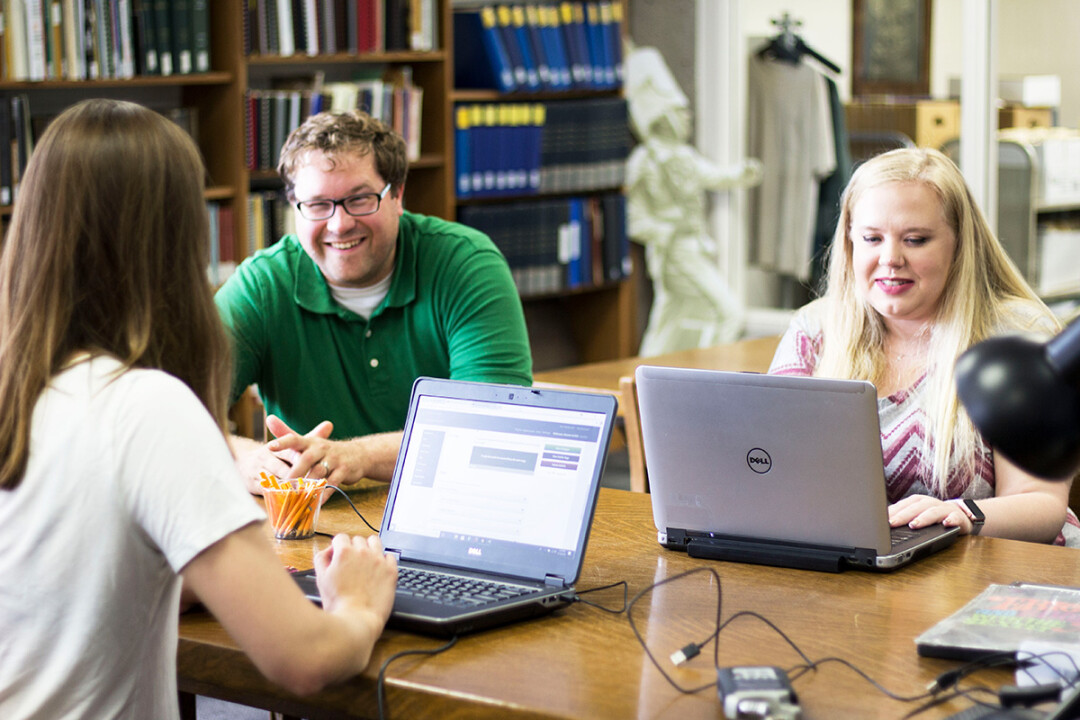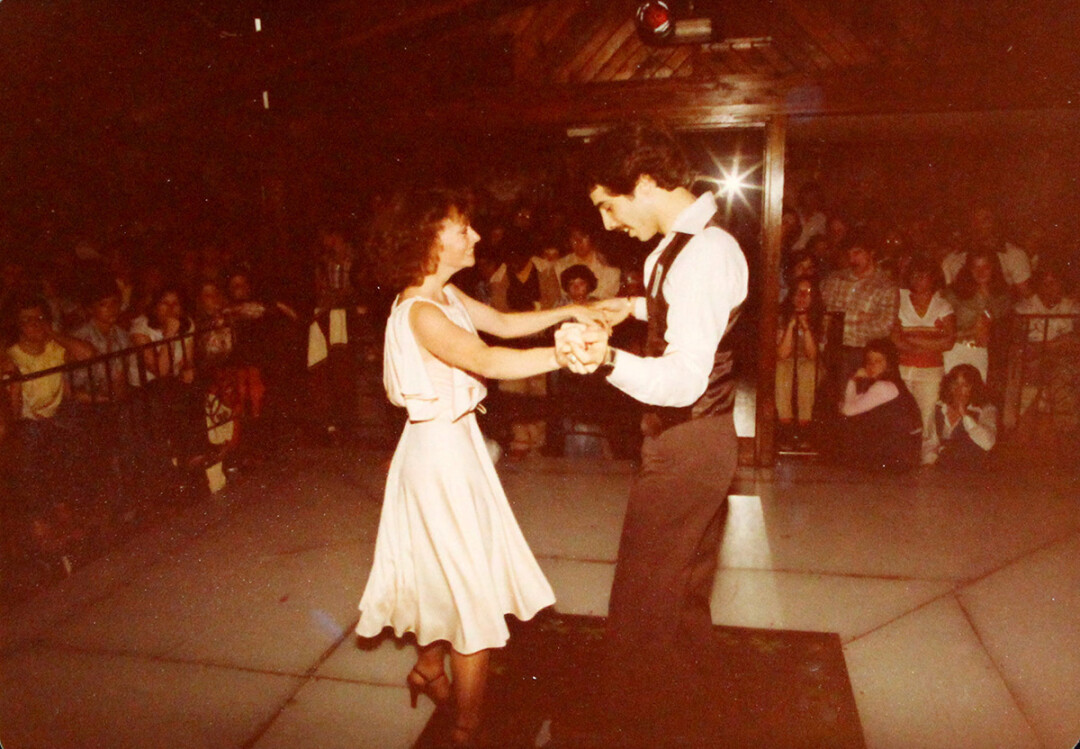Click Through the Past: Digitization Project Preserves Region’s Musical History
Diana Peterson, photos by Rachel Worthing |

Pick up any event guide or local calendar and it’s easy to see that music is an integral part of the Chippewa Valley. No matter what your personal preference – gospel, classic rock, folk, symphony, indie, country, blues – you’ll find performances you won’t want to miss. But what is the history of Eau Claire’s music scene? What influence did our cultural heritage have on our contemporary image?
“Identifying and surveying local artifacts and stories were important to capture
for local history.” – Carrie Ronnander, Chippewa Valley Museum
Dr. Daniel Ott and his UW-Eau Claire public history majors asked that same question. Their probing and research turned into a capstone project that resulted in The Sounds of Eau Claire – an oral history collection, digital archives, a website, and podcasts designed to provide an answer.
Collaborating with the Chippewa Valley Museum, McIntyre Library archivist Greg Kocken, and Blugold Radio, the UWEC Public History Department put together a rich social musical history of the Chippewa Valley.
Ott explained why it’s important to capture and preserve local history. He said the community has a vested interest in music and previously had no repository for those stories. The first step was to collect oral histories about music in our area. The second step was to involve the public by conducting “harvest” sessions to gather, digitize, and preserve additional history and artifacts.
Digitizing these records allows the university to retain thousands of records in a smaller space while allowing individuals to physically retain their artifacts. The Sound of Eau Claire does not accept objects, but if residents have the desire to donate their items, they are directed to the Chippewa Valley Museum or the McIntyre Library Archives.

“Identifying and surveying local artifacts and stories were important to capture for local history,” said Carrie Ronnander, executive director of the Chippewa Valley Museum. The museum has a rich folk music history collection, and the stories they heard and the artifacts they saw during the collection process complement and broaden that collection. The collection event also helped the museum develop an awareness of what items are available in the community for future programs and exhibits.
The artifacts cover a period of more than 125 years and include an 1880s violin used in a logging camp, a trumpet mouthpiece found in the construction site near what used to be Fournier’s Ballroom where Buddy Holly played a week before his death, home-made posters for Nate’s Dungeon (a basement music venue), scrapbooks from a variety of choral groups, and a photo album from the first Shake, Rattle, and Roll festival, the precursor to Country Jam.
“The site is meant to be all-encompassing, and the university would like to add current artifacts as well,” Ott said. The students chose to take a proactive approach to save records, rather than waiting 80 years to see what is still significant. While they have the violin from 1880, they also have recently built guitars – all items have equal value in preservation of historical moments in time.
“The shortcomings of the project were a lack of church music and ethnically diverse music,” Ott said. Those ethnic recordings and stories preserve “voices that select different historical moments,” he continued. A diverse collection saves “perspectives that provide valuable insight about the present and hold value for future historians as well.”

Ott has been reflecting on why the Chippewa Valley is such a treasure trove of musical history. He has determined it’s based on several factors, including the ethnically diverse groups who settled in the Upper Midwest and the Chippewa Valley’s location between Chicago and Minneapolis. UWEC’s strong music program also played a par. It provided the community with an appreciation of music and produced highly qualified music teachers, who in turn provided skills and a love of music to local students.
The success of this project is based on community involvement. “The true purpose of this collection is to save meaningful and relevant stories about our musical history based on what community members find exciting, significant, and important,” Ott said.
Ott has a couple of suggestions for people who want to get involved with the project. While the website is sorted by individual collections, the Facebook page will present cool objects with some interpretation in each post. The Sound of Eau Claire will be at several events this summer, such as the Tuesday Night Blues concerts or the municipal band performances, where they will be sharing about the depth of the website. Finally, people can tune into the Blugold Radio (99.9 FM) at 10:30pm Sundays to hear podcasts from this project. Comments are open on the online platform at soundsofeauclaire.omeka.net. “The more voices there are, the better we can understand authentic musical moments,” Ott said.


















